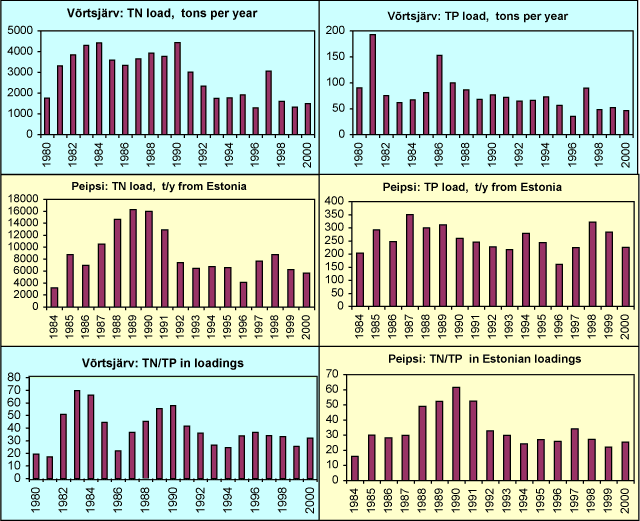


 |  |  | 21.2 Changes in nutrinet loading |
Riverine discharge of nutrients into Lakes Peipsi and Võrtsjärv increased during the 1980s while a sharp decrease occurred in the early 1990s [332][248]. This was mainly evidenced in TN loadings (Figure 3). The change resulted from the collapse of soviet-type agriculture, which was characterised by extensive use of fertilizers often accompanied by substantial nutrient leakage into water bodies. Significant reductions in fertilizer use, typical for the transitional economy during recent years, diminished nutrient losses from the catchment. Only 5-10% of N, P, and K mineral fertilizers and 30% of manure were applied to agricultural lands at the end of the 1990s compared to the levels at the end of the 1980s [249]. As TN loading decreased faster than TP loading, the TN/TP loadings ratio decreased (Figure 3).

 |  |  | 21.2 Changes in nutrinet loading |